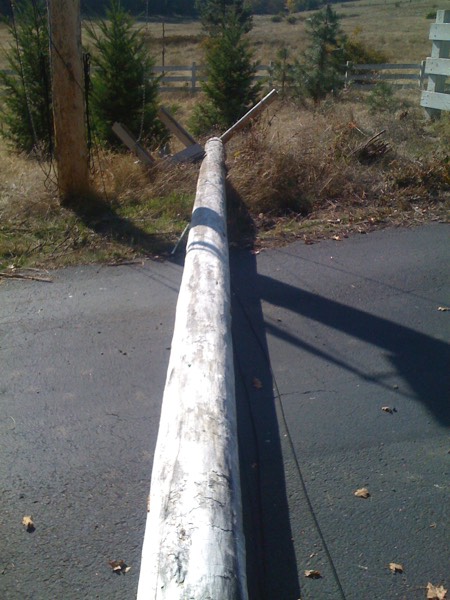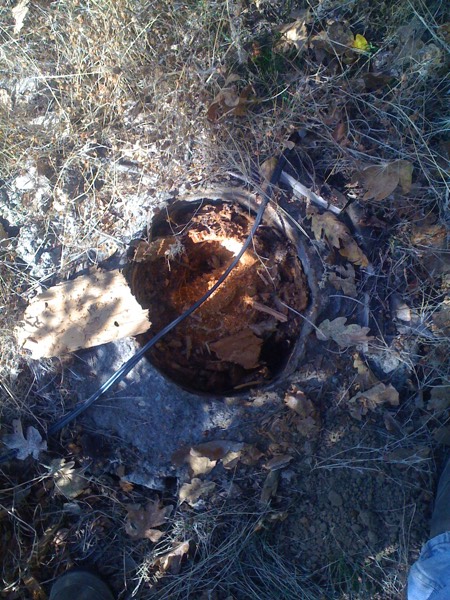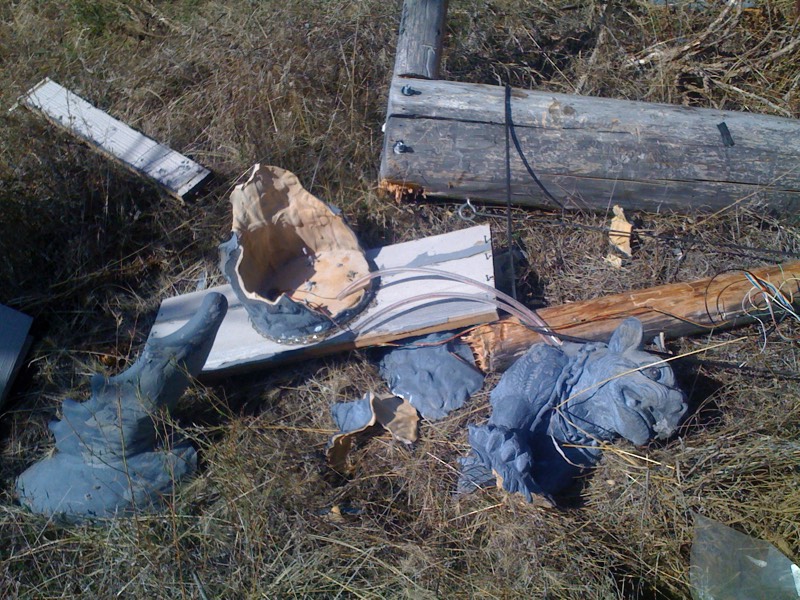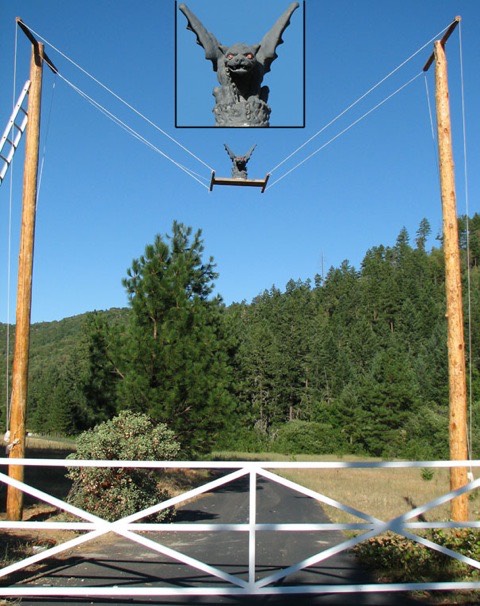October 29th, 2011
The gargoyle died a few days ago. The north pole failed and came crashing down, smashing the gargoyle into a hundred pieces. Let us pause for a moment to sing a ‘Te Deum’.
First, some pictures of the destruction:

The fallen pole

the point of breakage at the base of the pole

the body
As you can see, the impact was pretty violent. So, why did it fail after a mere four years? The answer has to do with the mechanics of a suspended weight. The gargoyle hung from the two pole. Each pole was 30 feet high; they were separated by about twenty feet and the gargoyle was about ten feet below the top. Here again is the photograph of the layout:

Note the shallow angle at which the gargoyle hangs; it’s about 38º. Now, the lateral force exerted by a hanging weight increases by something like the hyperbolic cosine of the angle of suspension and so can be much greater than the weight of the object. I believe that at a 45º angle the lateral force on the pole is equal to the weight of the object. The gargoyle plus box plus suspension stuff weighed about 40 pounds; thus, the lateral force on the poles was perhaps 50 pounds.
Now let’s convert lateral force to torque. The poles are 30 feet high; thus, the torque at the base, where it broke, was 1500 foot-pounds. That’s a lot of torque!
It gets worse: the log for the pole had serious internal rot. I had carefully checked both logs for rot by stabbing them with a knife up and down their lengths, and especially at their ends; the outer surfaces were quite hard. Normally, a log rots from the bottom up. The face of the log in contact with the ground stays wet throughout the wet season, which is what permits the rot. If the log has a solid exterior, then the interior is probably solid, too.
Except from one special case: if the log has a check (a cracked running up and down the log), and the check is on the upper surface of the log, then rain water will run into the core of the log. If the log is also raised above the ground, perhaps by laying on top of another log, then the outer surface will stay dry and will not rot. Thus, the outside of the log tests solid while the inside is rotten. This requires two special conditions: a check oriented upwards (not so rare) and the log elevated from the ground (rarer). That’s what happened here, and that’s why the pole failed.
The proper solution is to use a conventional arrangement in which the gargoyle sits atop a horizontal strut resting on both poles. This insures that all the force on the poles is vertical, not lateral. And vertical forces along a pole are supported by the compression strength of the pole, which is always great enough to support considerable weight. This will be the arrangement for the next gargoyle. And I needn’t make the poles 30 feet high next time: 16 feet of clearance is all that is needed for even the tallest trucks. I’ll make the poles 18 feet high, which makes them lighter and stronger. I don’t know what I’ll do for a crosspiece; I’ll probably just use another log, cut to fit into the poles.
The gargoyle itself will be another story. The old gargoyle cost me only a few hundred dollars when I purchased it more than 20 years ago; his replacement will cost more than $300, and is somewhat smaller than the original. There’s a really nice gargoyle for sale, but it costs $1000. Thus, I won’t be rebuilding the gargoyle anytime soon.
